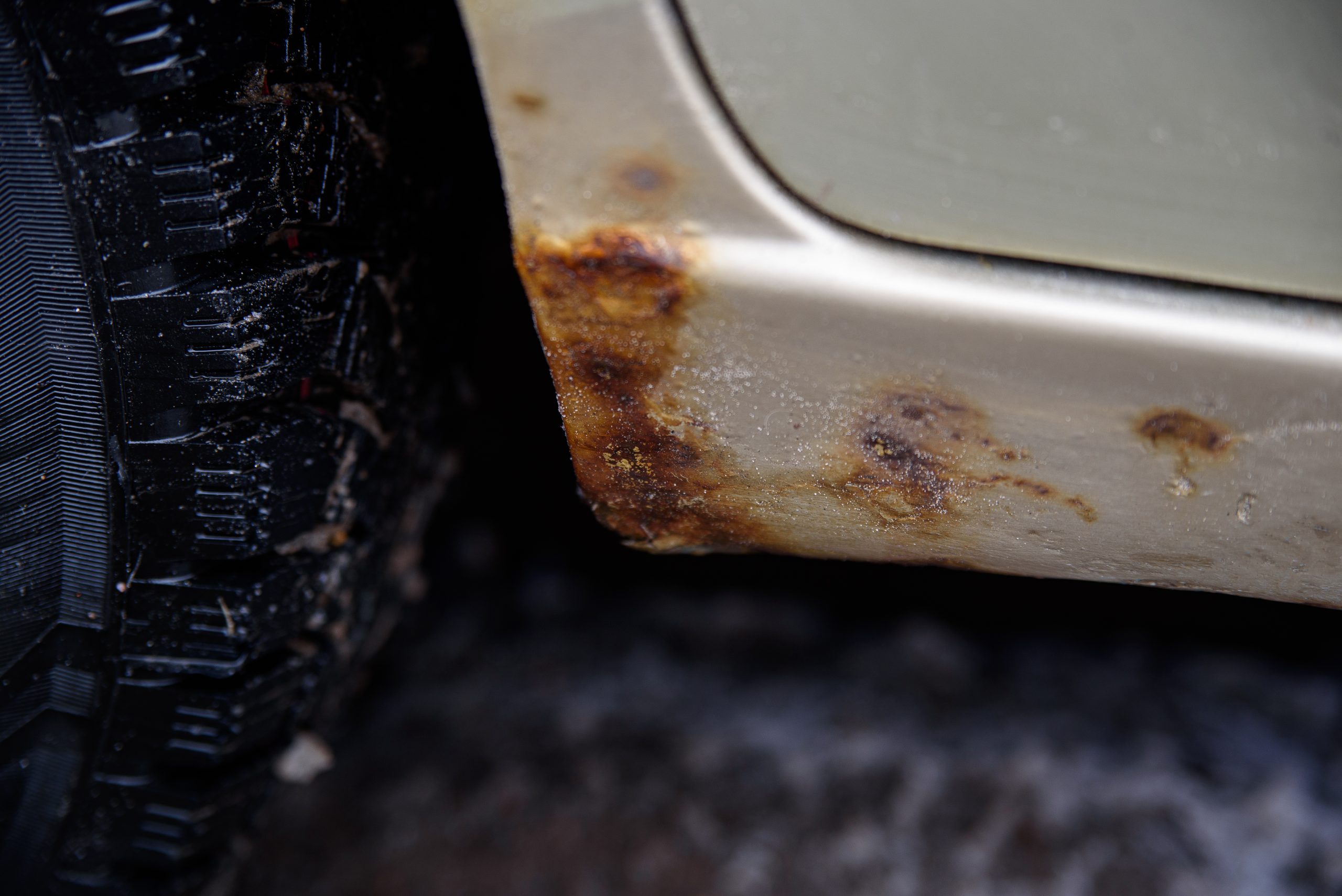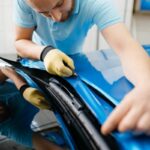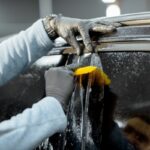Hey there car enthusiasts and friends!
Today, I want to talk to you about vinyl wrapping and one of the most commonly asked questions about it: can you vinyl wrap over rust?

As I used to be a salesman in the car wrapping industry, I’ve learned a lot about vinyl wrapping and rust through my experiences.
So, let’s dive in and learn about vinyl wrapping and rust on cars.
Introduction
Vinyl wrapping is a popular way to change the color and appearance of your car without committing to a permanent paint job.
It’s a cost-effective solution that allows you to express your style and protect your car’s paint at the same time.
However, one question that often arises when it comes to vinyl wrapping is whether or not it can be done over rust.
The answer to this question is essential to maintaining your car’s appearance and structural integrity, and that’s what we’re going to discuss today.
Can You Vinyl Wrap Over Rust? The Answer
The answer is no, you should not vinyl wrap over rust.
Before you apply a vinyl wrap to your car, you need to address any rust spots or damage on the car’s body.
To ensure a smooth installation and a long-lasting vinyl wrap, you need to remove any rust and repair the damage properly.
To remove rust, you can start by sanding the affected area with a sandpaper or wire brush.
Then, apply a rust converter or rust inhibitor to prevent the rust from spreading further.
You may also need to feather or sand the surrounding paint to create a smooth surface for the vinyl wrap to adhere to.
After the rust is treated, you can apply a primer and clear coat to the affected area to create a protective layer that will prevent moisture and rust-causing elements from reaching the metal.
Once the area is properly primed, you can apply the vinyl wrap to the rest of the car, creating a seamless and protective layer that will help prevent further rust and blemishes.
Now, I know that some of you may be thinking, “But what if the rust is just a small spot on my car? Can’t I just cover it up with vinyl?”
The answer is still no, unfortunately.
Even if the rust is small, it can still compromise the adhesion of the vinyl wrap and lead to further damage.
The best course of action is to address the rust before wrapping your car.
This may require sanding and priming the affected area, or even seeking professional help from a body shop to repair the damage.
While this may require some additional time and expense, it is ultimately the best way to ensure that your vinyl wrap will adhere properly and protect your car from further damage.
Understanding Rust on Cars
Rust is a type of corrosion that occurs when iron or steel comes into contact with water and oxygen.
When it comes to cars, rust is a common problem, and it can cause significant damage to the vehicle’s structure and appearance.
Rust spots, for example, can weaken the metal and cause the paint to peel, which can lead to more extensive and expensive damage over time.
If left unchecked, rust can even cause holes in the car’s body, which can compromise its structural integrity.
Vinyl Wrapping: What It Is and How It Works
Vinyl wrapping is a process that involves covering your car’s existing paint with a vinyl film.

The vinyl film can be custom designed to fit your style and the look you are going for, and it’s available in a wide range of colors and finishes, including matte and gloss.
Vinyl wrapping is a cost-effective and temporary way to give your car a new look and protect its paint from scratches, chips, and UV rays.
The Risks of Vinyl Wrapping Over Rust
While vinyl wrapping can protect your car’s paint from many hazards, wrapping over rust is not recommended.
Applying a vinyl wrap over rust can be risky for several reasons.
Firstly, the rust can compromise the adhesion of the vinyl wrap, leading to peeling and a suboptimal finish.
The vinyl wrap will not adhere to the rust, and it will likely peel off over time.
Secondly, the rust can continue to spread underneath the wrap, leading to further damage.
This can happen even if the rust is sanded down or treated with a rust converter beforehand.
Rust can spread like a disease, and once it starts, it’s challenging to stop.
If left untreated, it can jeopardize the entire structure of your car and lead to expensive repairs down the line.
Conclusion
In conclusion, while vinyl wrapping can be a great way to protect and enhance the appearance of your car, it is not a solution for covering up rust.
Rust can compromise the adhesion of the vinyl wrap and lead to further damage if left untreated.
To ensure the best possible outcome for your vinyl wrap, it is essential to address any rust or damage before applying the wrap.
Taking the time to properly prepare your car for a vinyl wrap can make all the difference in the longevity and effectiveness of the wrap.
By sanding, priming, and repairing any damage before wrapping your car, you can ensure that your vinyl wrap will adhere properly and protect your car from rust and other environmental factors.
At the end of the day, a vinyl wrap is only as good as the surface it is applied to.
By properly maintaining and preparing your car’s surface, you can ensure that your vinyl wrap will not only look great but also protect your car from rust, scratches, and other blemishes.
So, if you’re considering wrapping your car, be sure to take the time to properly prepare your car’s surface beforehand, and enjoy your new, protected, and stylish ride!









